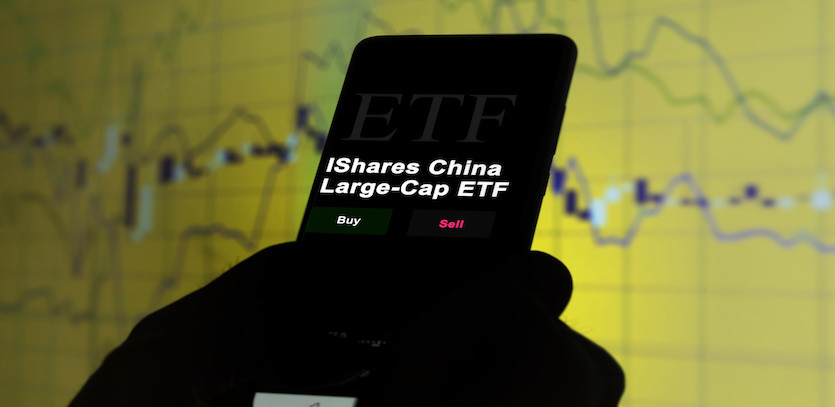Understanding Large-Cap Companies and Their Role in the Stock Market
In the arena of the stock market, large-cap entities are the undisputed powerhouses. These firms boast a market capitalization ranging from $10 billion to a staggering $1 trillion, serving as a beacon of stability, assured returns, and reliable cash flows for investors. In comparison to their small- and mid-cap counterparts who bring the promise of quick growth, large-cap stocks hold their ground with less volatility, higher dividend disbursements, and reduced risk.
Investing in large-cap exchange-traded funds (ETFs) is an efficient way to tap into this crucial asset class. The scope of large-cap companies extends from relatively obscure entities to universally recognized brands like Amazon, Apple, and Microsoft. Hence, the worth of the most prominent large-cap companies can exceed the smallest by a factor of 100. Most large-cap ETFs focus their investments on the biggest firms, relegating smaller companies to smaller positions.
Net Assets in Exchange-Traded Funds (ETFs)
The concept of 'net assets' signifies the capital funnelled into an ETF, offering a reliable metric for investors to evaluate a fund's relative popularity. ETFs that have only a few million dollars invested are generally underrepresented and somewhat illiquid. Contrastingly, ETFs that have attracted significant investment are likely to be backed by institutional investors, adding a layer of stability.
A company is typically considered a large-cap if it has a market capitalization exceeding $10 billion. Occasionally, companies that have grown to large-cap stature can be found within mid-cap ETFs. This occurrence is due to the fact that these companies were deemed mid-cap when added to the fund, and despite their growth, they retain certain mid-cap attributes.
As of the dawn of July 2023, the iShares Core S&P Mid-Cap ETF (IJH), with net assets amassing $69.3 billion, holds the crown as the largest publicly traded ETF focusing on the mid-cap segment.
The Investment Potential of Large-Cap ETFs
Large-cap ETFs serve as an excellent entry point for novice investors and a worthwhile strategy for seasoned investors. Investing in large-cap ETFs can yield handsome long-term returns. For instance, a portfolio comprising large-cap stocks like the S&P 500 has historically generated annual returns around 10 percent. However, returns can vary significantly, with good years bringing 30 percent returns and down years showing equivalent losses. Therefore, a buy-and-hold strategy is crucial to benefit from large-cap returns.
Large-cap companies, being the market's titans and financial stalwarts, often exhibit less volatility compared to even the best small-cap stocks. While they may experience substantial declines during turbulent times, they generally offer a safer bet. Another advantage is their propensity to pay higher dividends than smaller competitors.
Reasons for the Popularity of Large-Cap Companies
Large-cap companies have earned their popularity amongst investors for the following reasons:
- Top-tier businesses: Large-cap entities represent some of the world's premier businesses with unmatched competitive advantages.
- Financial prowess: Due to their robust businesses, large-cap firms enjoy access to ample cash reserves and can raise funds on favorable terms.
- Profit Generators: Though they might not grow as rapidly as small-caps, large-cap companies are proficient at generating cash and often return a large portion of their profits to shareholders as dividends.
- Reduced volatility: While stocks fluctuate, large-cap stocks usually exhibit less volatility than small-cap stocks, making them suitable for risk-averse investors.
The Standard & Poor’s 500 Index, comprising approximately 500 of America's most substantial companies, is a renowned collection of large-caps. This key index is crucial as it encapsulates the most prosperous American companies traded on the exchanges. These are compelling advantages for investors, but if you lack investing knowledge or prefer not to manage your investments, investing in a large-cap ETF is a sound starting point.
Top-Performing Large-Cap ETFs for July
- Invesco QQQ Trust (QQQ): This ETF, which follows the Nasdaq-100 Index (the 100 largest non-financial companies trading on the Nasdaq), posted a YTD performance of 37.0 percent in 2023.
- iShares Russell Top 200 Growth ETF (IWY): This fund, which tracks an index of large-cap U.S. growth stocks, recorded a 2023 YTD performance of 29.8 percent.
- iShares Russell 1000 Growth ETF (IWF): This ETF tracks the Russell 1000 Growth index, comprising large- and mid-cap U.S. growth stocks with higher valuations, medium-term growth expectations, and historical sales growth. It achieved a YTD performance of 26.7 percent in 2023.
- Nuveen ESG Large-Cap Growth ETF (NULG): This ETF invests in large-cap growth stocks adhering to specific ESG (environmental, social, and governance) criteria, tracking the TIAA ESG USA Large-Cap Growth Index. Its 2023 YTD performance stood at 25.1 percent.
- Vanguard Mega Cap Growth ETF (MGK): This fund, which tracks the CRSP U.S. Mega Cap Growth Index (the largest growth companies in the U.S.), recorded a 2023 YTD performance of 34.7 percent.
- Vanguard Russell 1000 Growth ETF (VONG): This ETF, which invests in stocks in the Russell 1000 Growth Index (a diverse group of large U.S. growth companies), posted a 2023 YTD performance of 26.7 percent.
- Schwab U.S. Large-Cap Growth ETF (SCHG): This ETF, which follows the Dow Jones U.S. Large-Cap Growth Total Stock Market Index (includes large and growing American companies), recorded a 2023 YTD performance of 32.6 percent.
To conclude...
In the complex game of stock market investments, large-cap companies play a pivotal role. With their high market capitalization, stable returns, and dependable cash flows, they offer investors a promising avenue for investment. The advantages of investing in large-cap ETFs are manifold - from gaining exposure to top-tier businesses to enjoying the benefits of deep financial resources and reduced volatility. For those who prefer not to manage their investments directly or are just starting their investment journey, large-cap ETFs offer an efficient and potentially profitable way to participate in the financial markets. However, like all investment strategies, understanding the dynamics of large-cap investing and the market conditions is crucial. The top-performing large-cap ETFs of July 2023 serve as a testament to the potential that these investment instruments hold. Nevertheless, individual circumstances and investment goals should always dictate the suitability of any investment approach.





